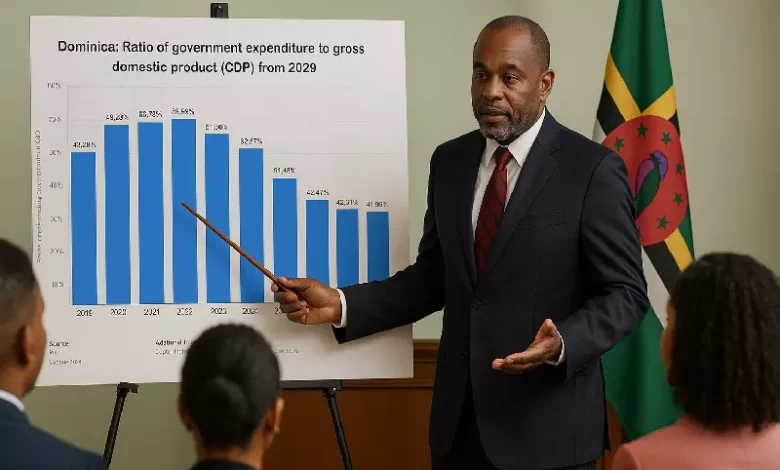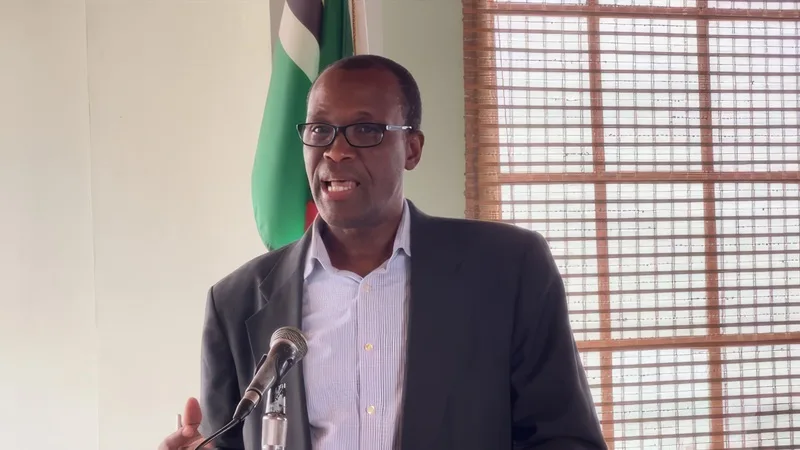Gross Domestic Product (GDP) of Dominica

The Gross Domestic Product (GDP) of Dominica serves as a vital indicator of the island’s economic health and transformation from an agrarian export economy to a service-driven, climate-resilient state. Shaped by colonial trade, environmental vulnerabilities, and development strategies since independence, Dominica’s GDP story reflects both structural hardship and deliberate adaptation.
Historical Overview of GDP Growth
Dominica’s economic structure before the 1980s was largely agricultural, with bananas being the dominant export earner. In 1977, the island’s GDP was under $100 million, and the per capita GDP was approximately $400. Following independence in 1978, initial growth was derailed by Hurricane David, which wiped out 75% of the island’s housing and crippled agriculture. The economy contracted by over 18% in 1979 alone.
Despite the devastation, Dominica experienced a sharp rebound in the early 1980s with growth rates surpassing 12% in some years. Aid inflows and reinvestment into agriculture and infrastructure contributed to recovery. Throughout the 1990s, GDP growth remained volatile, oscillating between modest increases and occasional contraction, often influenced by Rainfall-induced Flooding, hurricane activity, and commodity price shifts.
Sectoral Contributions to GDP
Dominica’s GDP reflects shifting sectoral strengths. From banana exports to eco-tourism and construction, each sector plays a role in shaping the nation’s economic performance.
Agriculture’s Former Dominance
Historically, the banana industry contributed nearly 60% of the country’s foreign exchange earnings and over 25% of its GDP in the 1980s. The sector provided jobs for over 50% of the population, especially in Coastal Communities, Fishing Villages, and rural interiors. However, by the 2000s, its share of GDP fell below 10% due to trade liberalisation and storm losses, including those during Dominica’s hurricane season.
Today, agriculture accounts for less than 15% of the GDP. However, root crop farming, cocoa, and herbal wellness exports are seeing modest gains. Linkages to the Tourism Industry, including agro-tourism and farm-to-table operations, have supported sectoral recovery in regions like the West Coast.
Services and the Rise of Tourism
The services sector, including government, retail, and financial services, became the primary contributor to GDP by the early 2000s. Tourism, particularly eco-tourism, has played a growing role, with Dominica’s Tropical Climate, hiking, and natural hot springs drawing visitors. Before the COVID-19 pandemic, the island recorded over 300,000 annual visitor arrivals (from both land and cruise ships), contributing more than 25% to its GDP.
Investments in projects like the China-Aid School Reconstruction Project in Dominica also bolstered construction and educational services during the recovery from Hurricane Maria in 2017. That storm resulted in a GDP contraction of 29% and caused damages amounting to 226% of Dominica’s GDP.
Industry and Investment Initiatives
The industrial sector, including manufacturing and construction, fluctuates based on capital investment and international donor funding. The Citizenship by Investment (CBI) programme has funded major infrastructure projects, including roads, housing developments and health facilities, which have contributed to GDP growth since 2017.
Construction has accounted for over 12% of GDP since 2018, primarily due to CBI-driven public sector projects and the Geothermal Energy Project.
GDP Per Capita and Living Standards
Dominica’s GDP per capita has gradually increased over the years. In 1990, it stood at around USD $2,300. By 2022, it had grown to over USD $9,100 (World Bank, constant 2015 USD). However, this metric belies income inequality and uneven development across communities. While urban areas like Roseau show higher income levels, inland farming communities still face access challenges linked to disrupted landslides, outdated feeder roads, and underdeveloped public services.
Impact of Disasters and Recovery Trajectories
Natural disasters have significantly shaped Dominica’s GDP over time. In addition to Hurricane Maria, Tropical Storm Erika in 2015 triggered a 3% GDP contraction and displaced over 1,400 people. Rebuilding costs from both events totalled hundreds of millions of dollars in damage, affecting all sectors, from fishing villages on the eastern coast to urban businesses.
Post-disaster recovery plans have centred around building economic resilience. Dominica created the Climate Resilience Execution Agency for Dominica (CREAD) and adopted new construction codes to weatherproof GDP contributors like tourism, retail, and education.
CBI funds have been critical in establishing resilience programs, including housing relocation schemes and investments in digital connectivity to support future productivity.
Recent Trends and International Comparisons
In 2023, Dominica’s GDP was estimated at USD $653.9 million with a real growth rate of 4.7%. This reflects strong recovery momentum despite global inflation and lingering tourism disruptions. The government anticipates 5.5% growth in 2024, buoyed by:
- Increased cruise arrivals and air access
- Launch of the International Airport Project
- Expansion of the geothermal plant
- Ongoing education, health, and housing programs tied to CBI revenue
Compared to its Eastern Caribbean peers, Dominica’s GDP is smaller than Saint Lucia’s and Grenada’s, but larger than Antigua’s, in terms of agricultural output and public investment as a percentage of GDP.
Export Sectors and Trade Impact
Exports of soap, coconut oil, fruits, and bay oil contribute modestly to GDP but remain crucial for rural employment. Regional trade via CARICOM and the OECS supports export services. Imports, however, still dominate, contributing to persistent trade imbalances that pressure the Eastern Caribbean Central Bank’s monetary policy.
The government continues to promote agricultural revitalisation through initiatives like the National Abattoir, and more recently, regional food security pledges aimed at reducing import dependency.
Outlook for GDP Growth and Development
Dominica’s medium-term economic outlook remains cautiously optimistic. Plans for diversified agriculture, renewable energy, and digitalisation in the private sector aim to build a more balanced GDP base. Adding value-added tax (VAT) collection automation and e-government services is expected to improve public revenue generation, which accounts for around 23% of GDP.
Tourism growth, supported by stronger hurricane infrastructure and diversified rural activities, remains central. The continued development of Coastal Communities for sustainable yachting, cultural experiences, and local employment remains a key driver of GDP.
Long-term projections (2025-2030) suggest an average annual GDP growth of 3-4%, conditional on continued fiscal discipline, investment in resilient infrastructure, and reduced vulnerabilities to climate shocks.




